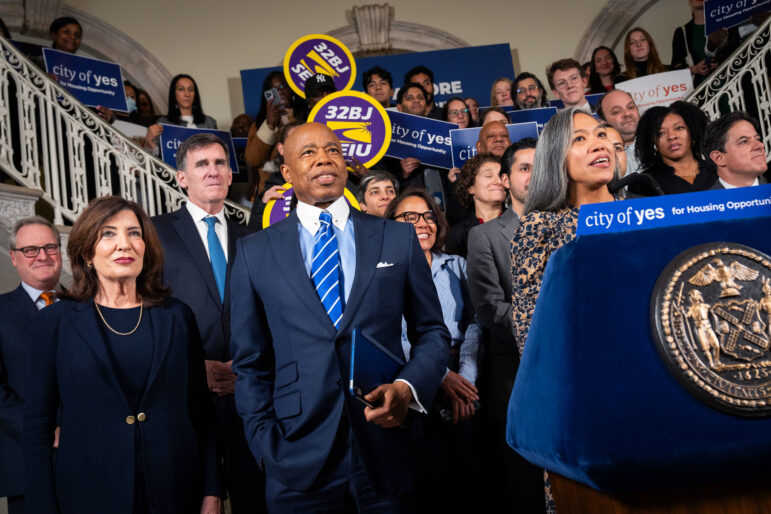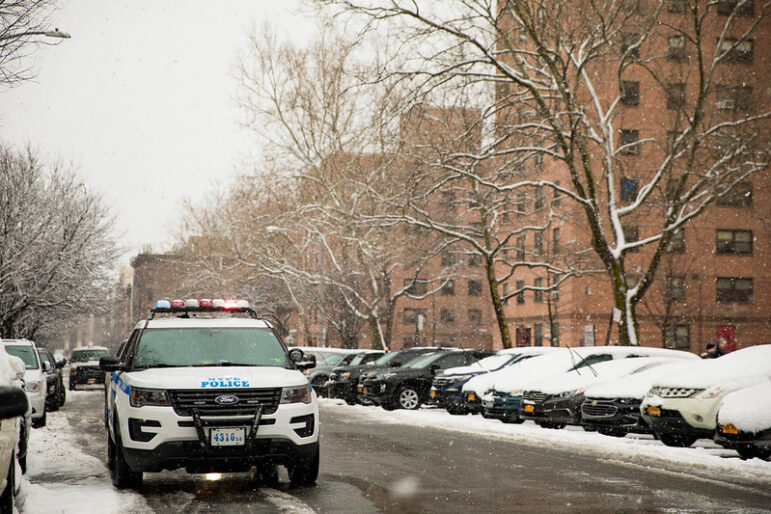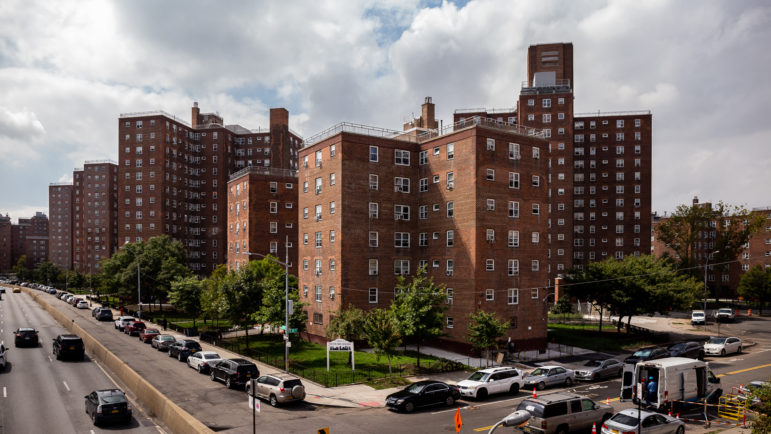About 20 houses in South Jamaica are prone to sewer backups every few months, say homeowners, some of whom have dealt with the issue for more than a decade. But because the sewer line is on private property, the residents are left to contend with the problem on their own.
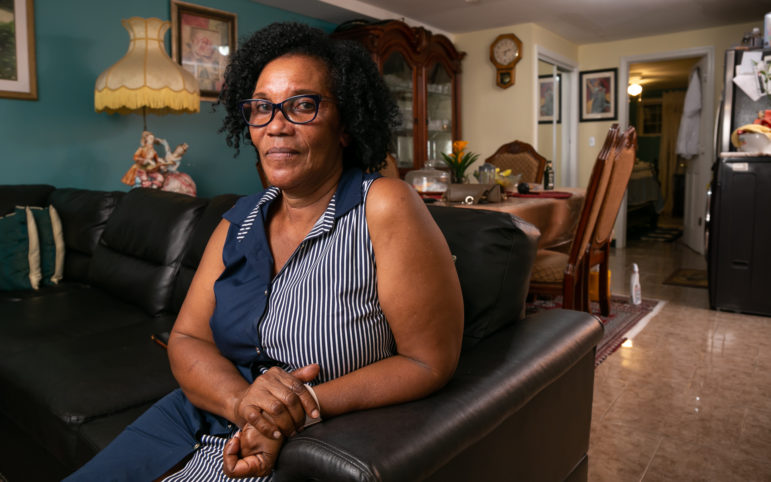
Adi Talwar
Joycillin Davis, who bought a home in South Jamaica in 2016, one of about 20 homes in the neighborhood plagued by frequent sewage backups.
Little did Joycillin Davis know that just a few months after buying a brick house in South Jamaica in 2016, she’d be confronted with a perpetual headache in her new home.
Davis doesn’t like to recall her first day with the dilemma but she knows the details. She was at work as a live-in home health aid when her tenants called to tell her they saw water on her steps. Davis figured it was just a bit of rainfall, but was curious enough that she asked for time to leave her job to look into the issue.
She quickly realized that it wasn’t rain, but brown sewage slop.
This wouldn’t be the last time Davis would experience this. She and her neighbors say the backups happen as often as every three months. Each time, they go through the same rigamarole: someone calls 311, a worker from the NYC Department of Environmental Protection (DEP) is dispatched, they check the main sewer line on the street and find no issue.
Neighbors then tell the dispatcher that the backups happen on a shared sewer line in their backyards. But because it’s private property, the agency can not fix the problem. About 20 houses are affected on 106th Road and 107th Avenue in South Jamaica, and many homeowners have dealt with the backups for more than a decade.
“We are tired of this situation. Living in poo, living in doo,” Davis says. “This is New York City and we’re not supposed to be living like this.”
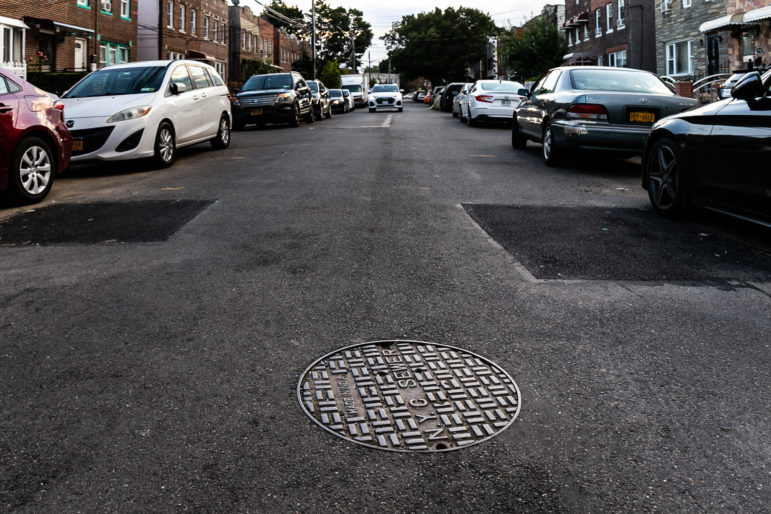
Adi Talwa
A sewer manhole near the East end of 106th Road in Jamaica, Queens.After decreasing steadily for four years, sewer backups across the city rose sharply last year, driven by climate change that’s led to more frequent and intense rainfall than the city’s antiquated sewer system was designed to handle, officials told City Limits. During the most recent fiscal year that ended in July, the DEP received some 16,521 sewer backup complaints, up more than 40 percent from the year prior, recent data shows.
Less than a quarter of those complaints were confirmed and involved city-owned infrastructure, the data shows. The rest, some 12,749 reported sewer backups, were either unconfirmed or—like the Queens’ homeowners—were on private property, up from 9,772 incidents the year before.
READ MORE: Sewer Backups Nearly Doubled in NYC Last Year Due to Climate Change
Sara Rodriguez, a former social worker who now owns a nearby corner store with her husband, has become the de facto record keeper for her neighbors. She has receipts from cleaning companies, logs of 311 calls and emails with city officials over the years about the backups. The receipts date back to 2011 and total nearly $16,000 in repairs residents have made to the sewer line, not including money spent on purchases such as check valves, pumps and auto feed drain cleaners to rectify the sewer snags.
She organizes a pool where residents who are able or willing contribute $50 monthly to pay the sewer cleaning companies that come to fix the pipe. Many times, residents cover for others unable to pay. Even then, some months she still comes up short. “Sometimes we have to go door by door begging for money,” Rodriguez said.
Typically each property in the city has its own sewer line, according to DEP. However, the houses on this lot were built on a shared one, and the city agency says it’s up to the homeowners to fix the issue on their own. “It is the residents’ shared sewer service line—they are responsible for any and all repairs to it,” said Edward Timbers, a spokesperson for DEP.
Timbers says the agency has also looked into the sewer lines in the area and says blockages occur on the private line. DEP did not comment on the cause of the Queens neighbors’ plight, though the city has previously said the majority of blockages across the five boroughs are caused by grease poured down the drain that builds up in pipes—a phenomenon known as “fatbergs.”
But the homeowners believe, because the backups happen so often, that there’s a larger systemic issue at play, and that the pipe that’s the source of the problem isn’t large enough to serve the subdivision. They told City Limits the incidents are becoming more frequent, and they take weather into account, scheduling a cleaning when they know heavy rains are coming.
Queens residents are no strangers to sewage backups. According to the city’s latest State of the Sewers report, Queens leads the city with more than 4,000 backup complaints in fiscal year 2021. Furthermore, the city has been under an administrative order by the U.S. Environmental Protection Agency since 2016 to fix its sewer system. Since 2013, the DEP has partnered with a private company to offer water and sewer service line insurance to help homeowners across the city foot the cost of repairs.
According to the EPA, there were nearly 300 reported sewer backups in fiscal year 2020 in Queens Community Board 12, which includes South Jamaica—a decrease from nearly 500 backups in 2015.
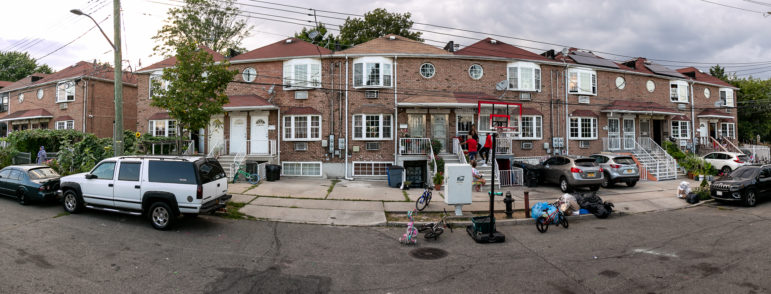
Adi Talwar
Homes on the east end of 107 Avenue in Jamaica, Queens.Still, Eric Goldstein, the New York City environment director of the advocacy group National Resources Defense Council, says the city needs to work harder to help residents who deal with waste flooding their homes. “With the kind of repeated constant barrage of flooding, the government needs to step in and help these residents.”
Hasna Happy has lived in South Jamaica since 2017 with her husband, two kids and her mother-in-law. When the backups come, opening her windows and doors doesn’t help with the overwhelming stench, and she has to inform her tenants not to shower or flush the toilet until everything is cleared up.
She grants neighbors access to her yard in case she’s not home so cleaning companies can reach the manhole in her garden. “Constantly people have to come into my backyard,” she said. Even though she trusts her neighbors, “I want some privacy and I want my house to myself,” she added.
John Senn, a spokesperson for the EPA region that includes New York and New Jersey, said the city’s way of addressing backups in the past was mostly reactionary. Under a pilot plan, the city identified four community boards with the greatest backup rates. Queens Community Board 12—which includes South Jamaica as well as Hollis, St. Albans and parts of Springfield Gardens—was one of those districts.
According to Census data, more than 40 percent of the district’s nearly 300,000 residents are immigrants. About 60 percent of the residents are Black, nearly 20 percent are Latino and about 15 percent are Asian. Senn says though the EPA order doesn’t take into consideration environmental justice, “it is the EPA’s understanding that many of these areas have environmental justice concerns.”

Hasna Happy and her daughter Sabirah Ayesha near their Queens home. 
A sewer manhole in Hasna Happy’s family home backyard. 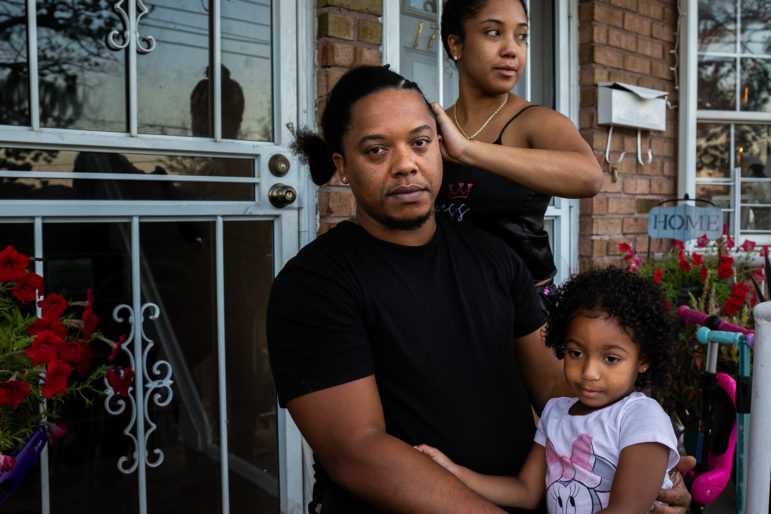
Randy Lezama, one of the affected residends, with his family on his front patio in Jamaica, Queens. 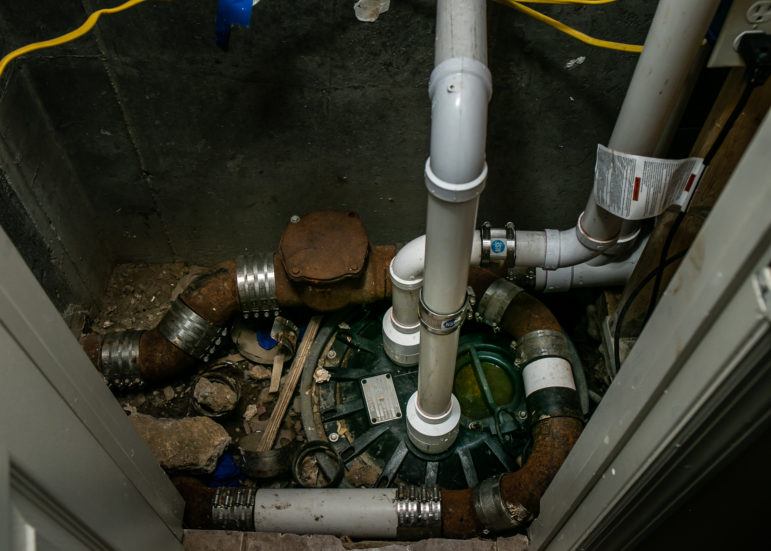
Plumbing Joycilin Davis had to have installed to mitigate sewage backup flooding in her home.
City officials have long acknowledged that Southeast Queens has suffered from decades of infrastructure and environmental neglect. The brunt of the effects are experienced by the borough’s residents of color.
The area is currently under an ongoing $2 billion project called the Southeast Queens Initiative that aims to improve street conditions and alleviate flooding in community districts 12 and 13 through infrastructure upgrades.
“I think everyone agrees that this funding was long overdue. And I think just the dollar amount establishes that,” said Natalie Bump Vena, a professor of urban studies at CUNY’s Queens College who led an initiative to help residents in another part of Queens get legal representation and compensation for a 2019 sewer explosion that flooded 120 homes with raw sewage.
After initially saying the collapse was due to residents pouring grease down the drain, the city accepted responsibility for the disaster. Though those circumstances are different from the backups in South Jamaica, Vena says there are commonalities.
“One of the things that is similar is this tendency of the city to blame residents for what has happened or to blame private property owners for failures in public infrastructure,” she said, adding that infrastructural disinvestment in communities of color is a problem not only in Queens, but across the country.
“I think in these situations, council members can be advocates,” says Vena. “And so I do think that in this case, I would like to see the council member putting a lot of pressure on DEP, to come up with a solution and to work on a solution with this community.”
Councilwoman Nantasha Williams, who represents this section of South Jamaica, did not respond to requests to comment from City Limits, though her office scheduled a visit to the affected homes in the summer.
Residents say they can smell when a backup is about to happen. A blockage on any day is troublesome, but it’s especially aggravating on a holiday when cleaning companies aren’t open, as was the case with a backup that happened on Christmas Day 2021 and another year on New Year’s Day.
Residents say leaving their homes for a few days can be risky; there’s a chance they’ll return with a home full of sewage. “Sometimes you go on vacation and come back and the whole basement is flooded,” said resident Randy Lezama.
Through pulling together resources, neighbors have come up with band-aid solutions to deal with the problem on their own—though they argue it shouldn’t have to be that way and that they’re long overdue for help.
“It’s like a domino effect,” said resident Hasna Happy. “Your house is flooded and everyone is connected.”
“We’re so sick and tired,” she said.


